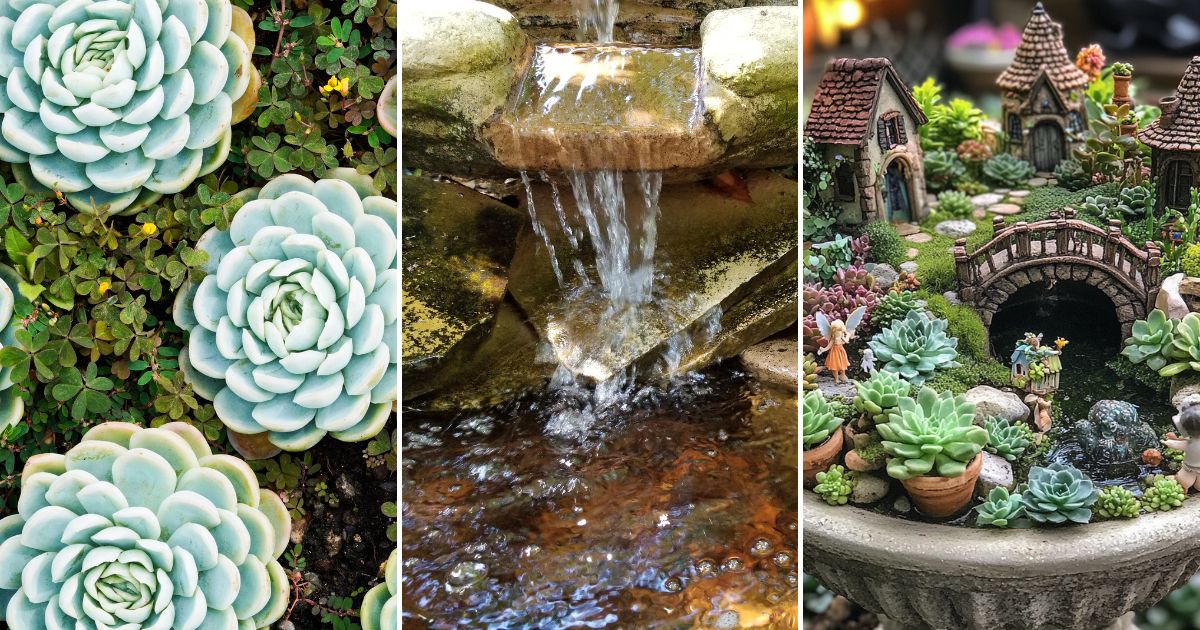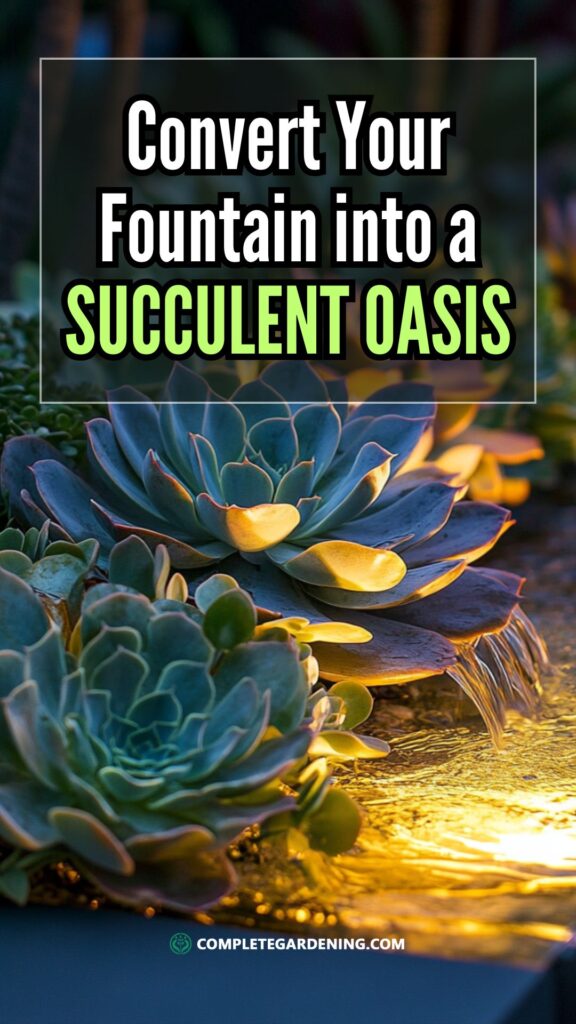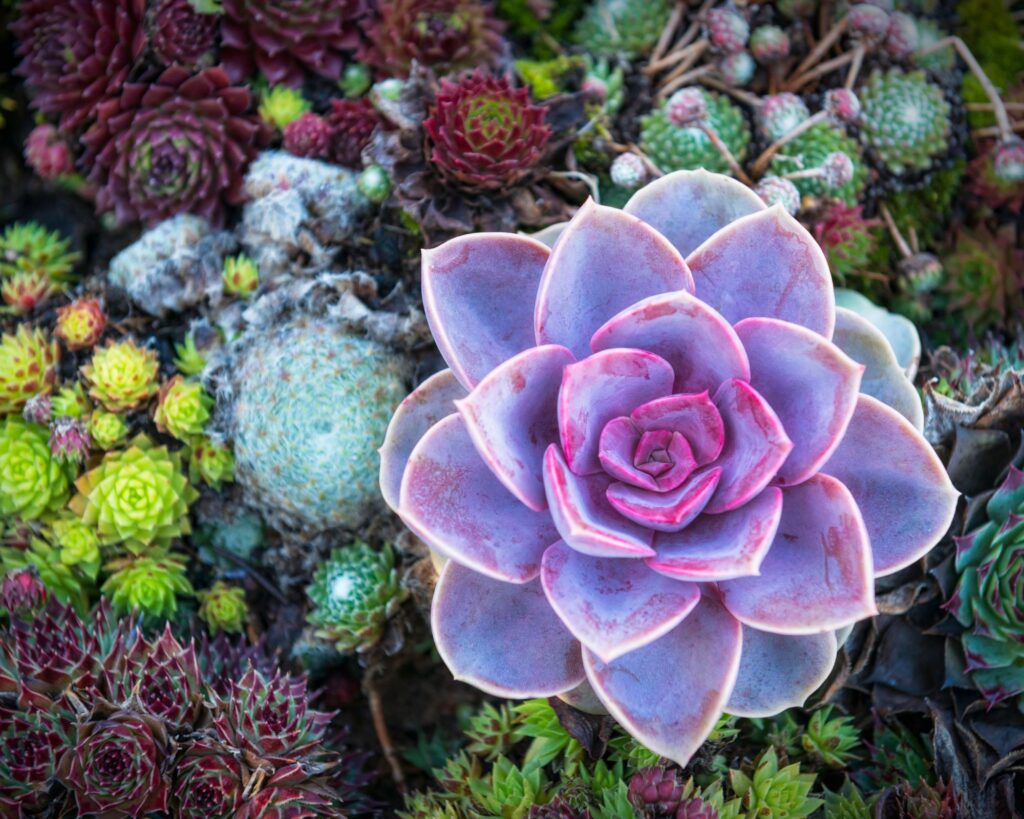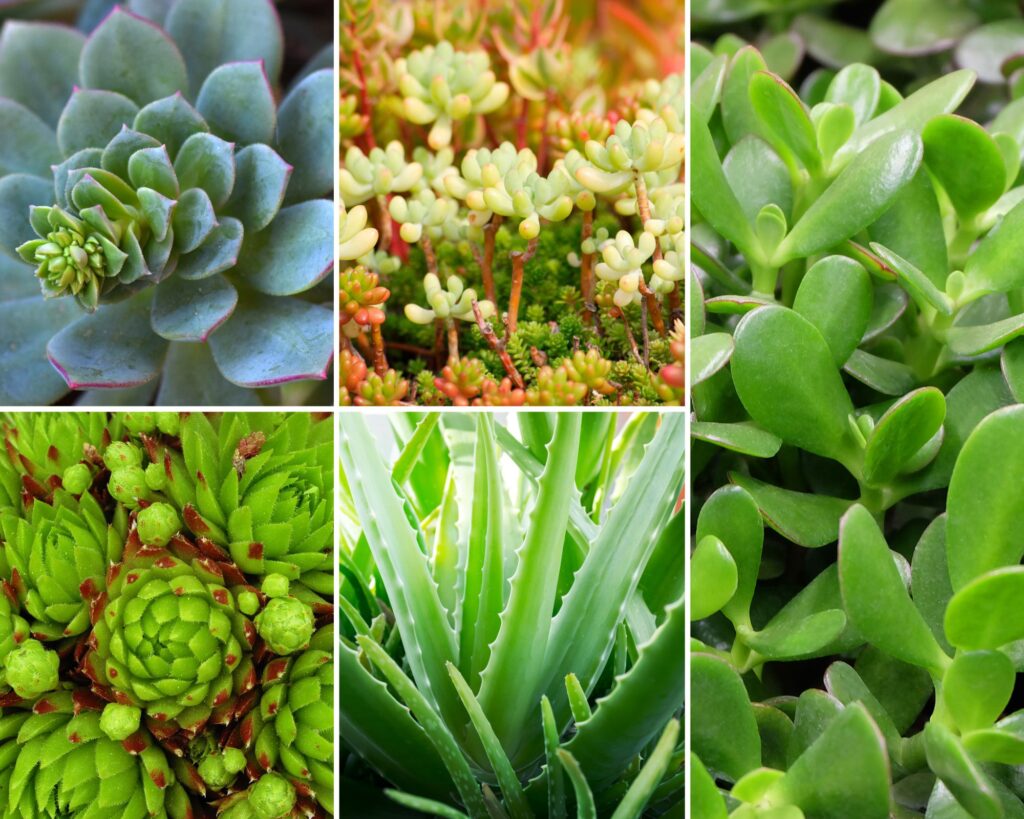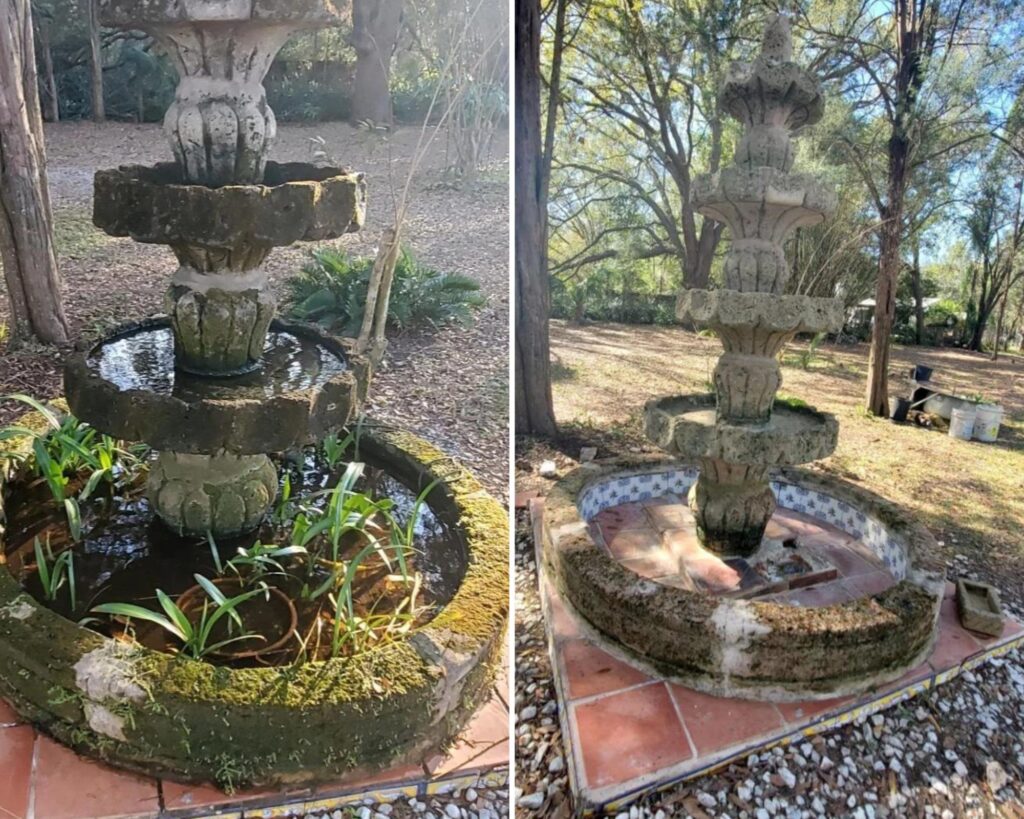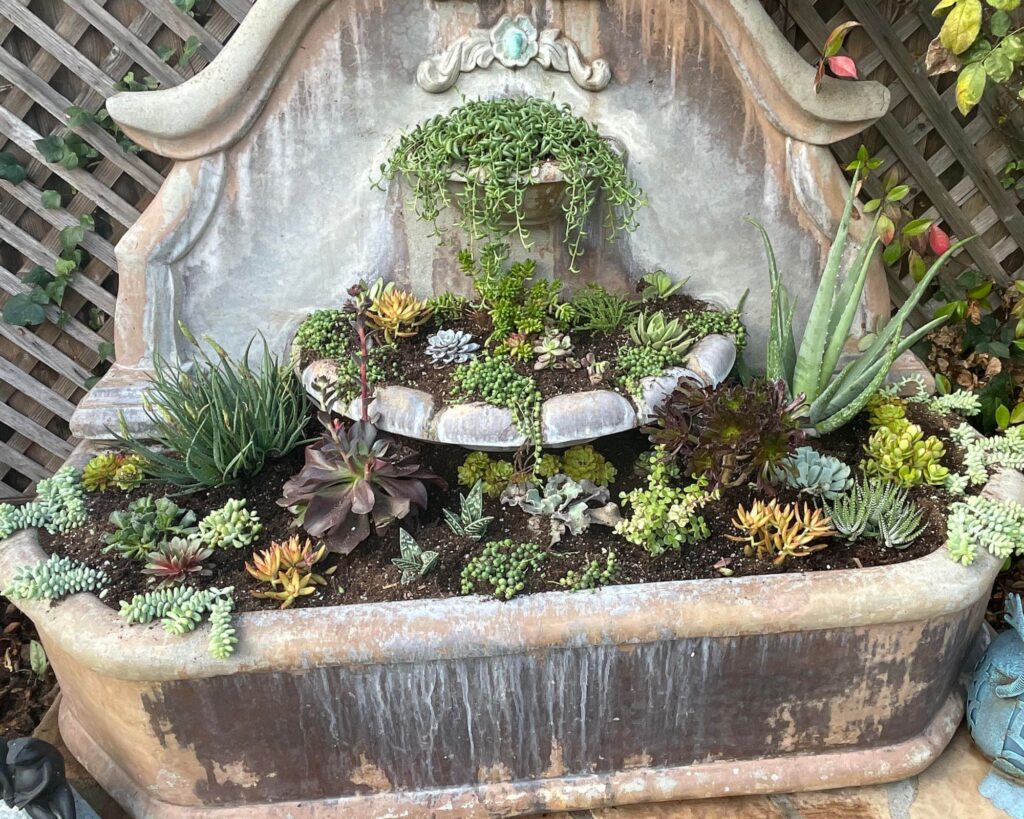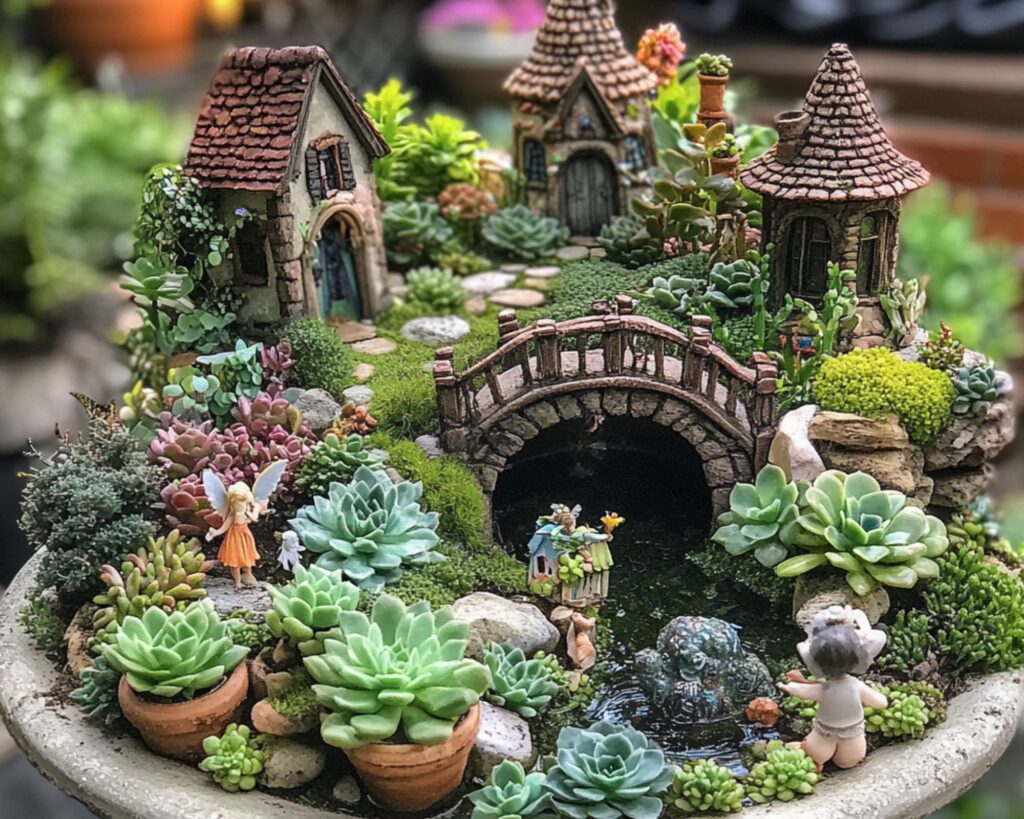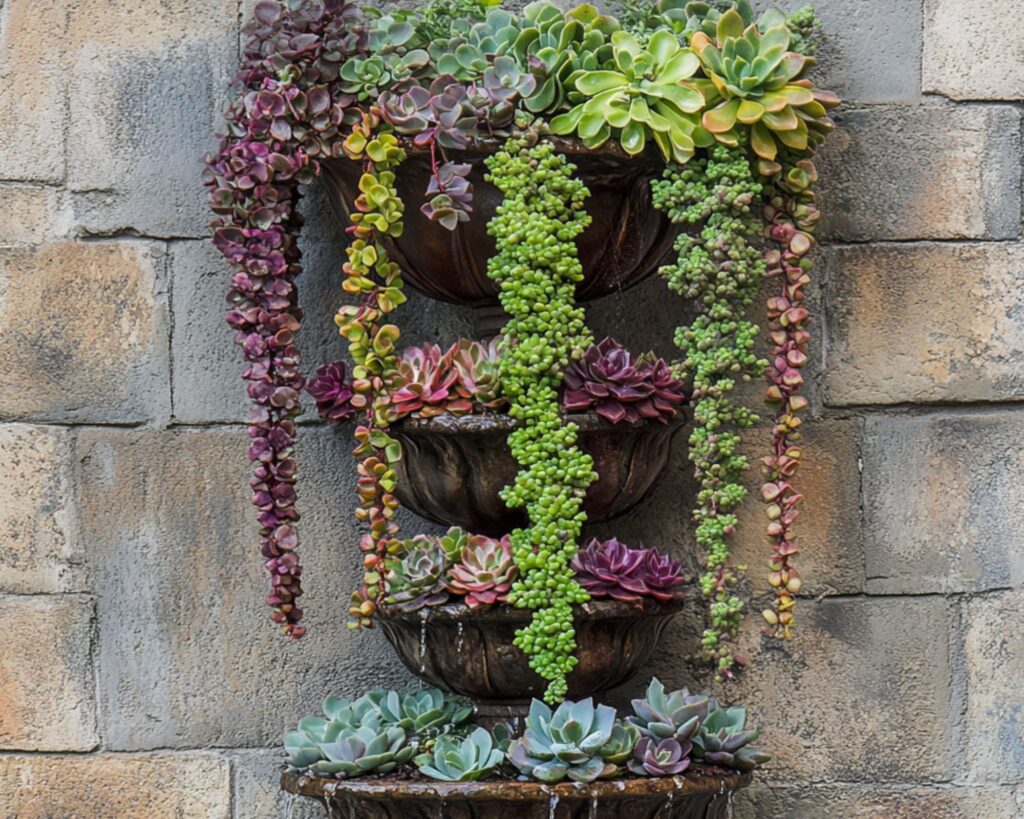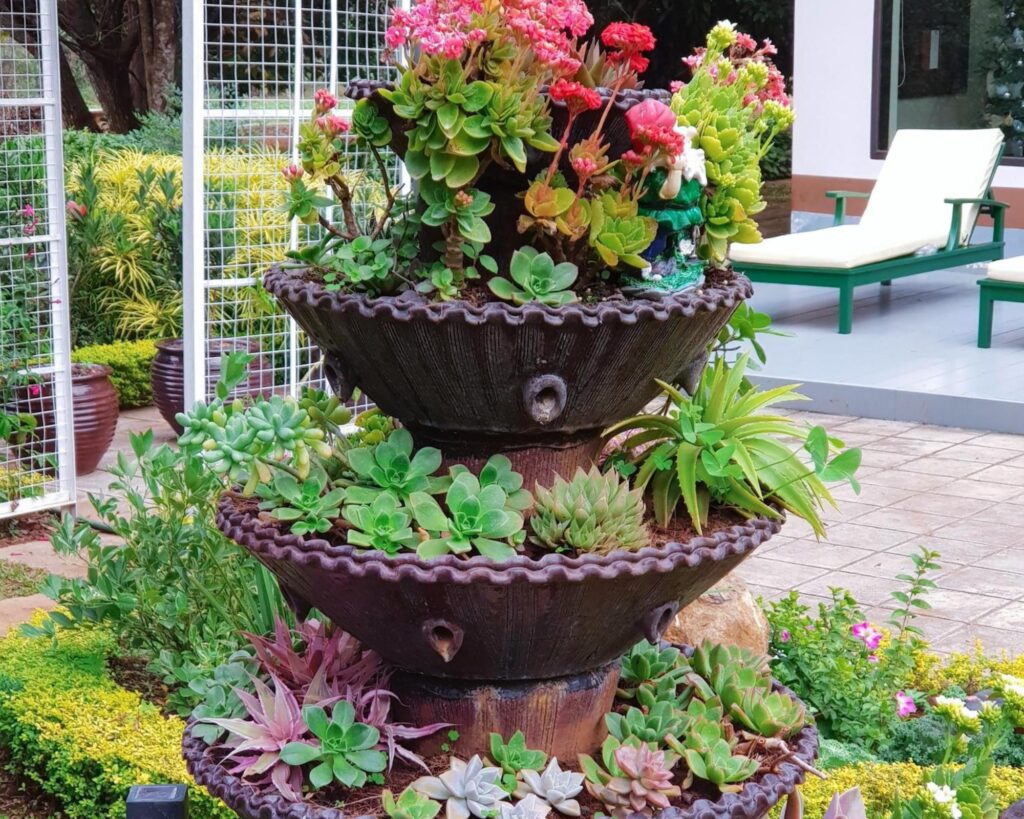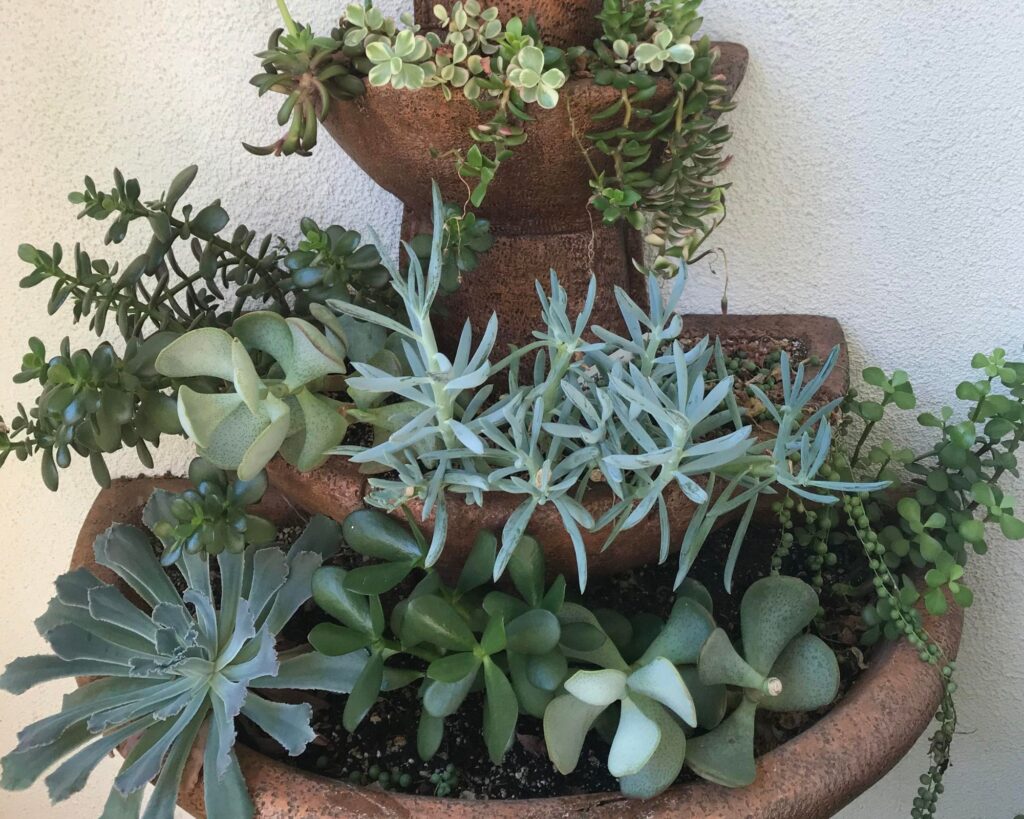Succulents are more than just trendy plants; they’re a gateway to endless garden creativity. But here’s a question: What if you could turn an ordinary, even neglected, garden fountain into a lush, succulent-filled oasis?
Imagine a fountain no longer bubbling with water but overflowing with life in a way that’s both captivating and incredibly low-maintenance.
Whether you have a fountain that’s lost its charm or you’re simply ready for something new, converting it into a succulent garden could be your next great gardening adventure.
Let’s dive into this guide and discover how to make it happen, step by step.
Why Convert a Fountain to a Succulent Garden?
Fountains, by their very design, offer a perfect structure for displaying succulents. Their tiered levels provide a multi-dimensional space that can be used to create different layers of plant life, giving the garden a dynamic and lush appearance.
Additionally, the basin of the fountain is typically shallow, which is ideal for succulents, as they do not require deep soil to thrive.
Repurposing a fountain as a succulent garden is also an environmentally friendly choice, as it allows you to recycle a garden feature that might otherwise go unused.
Choosing the Right Succulents
Before you begin converting your fountain, it’s essential to choose the right succulents. Succulents vary widely in terms of size, color, and growing requirements, so selecting the appropriate varieties will ensure your garden flourishes.
Here are some popular succulents that are well-suited for fountain gardens:
1. Echeveria: Known for their rosette shape and stunning colors, Echeverias come in various sizes and can add a soft, floral look to your fountain.
2. Sedum: This versatile succulent comes in many forms, from low-growing ground covers to taller, more structured plants. Sedums are hardy and can tolerate a range of conditions.
3. Sempervivum (Hens and Chicks): These small, rosette-forming succulents are perfect for filling in tight spaces and adding texture to your garden.
4. Aloe: Aloe plants are known for their spiky leaves and healing properties. They can add height and interest to your succulent garden.
5. Crassula (Jade Plant): Crassulas have thick, fleshy leaves and can grow quite large, making them ideal for adding structure to your fountain garden.
When choosing succulents, consider the size of the fountain and how much sunlight the area receives. Succulents thrive in well-lit areas, so if your fountain is in a shady spot, opt for varieties that can tolerate lower light conditions.
Preparing the Fountain
Once you’ve selected your succulents, it’s time to prepare the fountain. Here’s how to get started:
1. Clean the Fountain:
Begin by thoroughly cleaning the fountain. Remove any debris, dirt, or algae that may have accumulated. A clean surface will help the succulents establish themselves more easily.
2. Seal Any Holes:
If your fountain has drainage holes, you’ll need to seal them to prevent soil from washing away. Use a silicone sealant or waterproof epoxy to plug the holes.
However, if you live in an area with heavy rainfall, you may want to leave one or two small holes unsealed to allow excess water to drain.
3. Create a Base Layer:
To prevent water from pooling at the bottom of the fountain and causing root rot, create a base layer using pebbles, gravel, or broken pottery shards. This layer will help with drainage and keep the roots dry.
4. Add Soil:
Succulents need well-draining soil to thrive. Use a cactus or succulent potting mix, which is specifically designed to provide the right balance of nutrients and drainage. Fill the fountain tiers with the soil, leaving about an inch of space from the top.
5. Plan Your Layout:
Before planting, take some time to plan out your layout. Consider the size and growth habits of each succulent, and place larger plants in the lower tiers, where they can have more room to spread out.
Smaller, trailing succulents can be placed in the upper tiers, where they can cascade down the sides.
Planting the Succulents
Now that your fountain is prepped and your layout is planned, it’s time to start planting.
1. Start with the Largest Plants:
Begin by planting the largest succulents first. Dig a small hole in the soil, place the succulent in the hole, and gently press the soil around the base to secure it. Be careful not to damage the roots.
2. Add Medium-Sized Succulents:
Next, add medium-sized succulents around the larger ones. These will help fill in the space and create a layered effect. Again, dig small holes, place the succulents, and press the soil around them.
3. Finish with Smaller Succulents:
Finally, plant the smaller succulents in the remaining spaces. These can be tucked into crevices or placed near the edges of the tiers to create a cascading effect.
4. Add Top Dressing:
To give your succulent fountain a finished look, add a layer of top dressing around the plants. This can be small pebbles, crushed granite, or decorative gravel. Top dressing not only enhances the appearance but also helps retain moisture in the soil.
5. Water Sparingly:
After planting, give the succulents a light watering. Succulents are drought-tolerant and do not require frequent watering. In fact, overwatering is one of the most common causes of succulent failure.
Allow the soil to dry out completely between waterings, and adjust your watering schedule based on the weather and the needs of your plants.
Creative Succulent Fountain Ideas
Now that you’ve mastered the basics of converting a fountain into a succulent garden, here are some creative ideas to inspire your project:
1. Fairy Garden Fountain:
Create a whimsical fairy garden within your succulent fountain. Incorporate miniature fairy houses, tiny bridges, and small figurines among the succulents to add a magical touch.
Use small succulents like Sedum or Sempervivum to maintain the scale of the fairy garden.
2. Zen Succulent Fountain:
Design a tranquil, Zen-inspired succulent garden by incorporating smooth stones, sand, and minimalist arrangements of succulents.
Use Aloe or Echeveria in symmetrical patterns to create a sense of balance and harmony.
3. Vertical Succulent Fountain:
For a dramatic effect, consider converting a wall-mounted fountain into a vertical succulent garden.
Plant trailing succulents like String of Pearls (Senecio rowleyanus) or Burro’s Tail (Sedum morganianum) in the upper tiers and allow them to cascade down, creating a lush, green waterfall effect.
4. Colorful Succulent Fountain:
Emphasize the vibrant colors of succulents by selecting a variety of hues and placing them in a color-coordinated arrangement.
Group succulents with similar colors together, such as blues and purples, or create a rainbow effect by arranging them in a gradient pattern.
5. Succulent Fountain with Accent Lighting:
Highlight your succulent fountain by adding accent lighting. Install solar-powered garden lights around the fountain to illuminate the succulents at night, creating a stunning focal point in your garden.
The soft glow will enhance the textures and colors of the succulents, making your garden a nighttime spectacle.
Caring for Your Succulent Fountain Garden
Once your succulent fountain is complete, ongoing care is essential to keep it looking its best. Here are some tips to ensure your succulent garden thrives:
1. Monitor Watering: Succulents are prone to root rot if overwatered. Check the soil regularly, and water only when it’s dry to the touch.
2. Prune Regularly: Remove dead leaves and spent flowers to keep your succulents healthy and encourage new growth.
3. Protect from Frost: If you live in an area with cold winters, consider bringing your succulent fountain indoors or covering it during frost to protect the plants.
4. Fertilize Sparingly: Succulents don’t need much fertilizer, but a light application of a balanced, water-soluble fertilizer during the growing season can promote healthy growth.
5. Rearrange and Refresh: Over time, some succulents may outgrow their space or need refreshing. Don’t be afraid to rearrange your plants or replace any that aren’t thriving.
Converting a fountain into a succulent garden is a creative and rewarding way to enhance your outdoor space. With their unique shapes, colors, and low-maintenance needs, succulents are the perfect plants to bring new life to an old fountain.
Whether you choose a minimalist Zen design, a vibrant color palette, or a whimsical fairy garden, your succulent fountain will undoubtedly become a stunning focal point in your garden.
So, gather your succulents, get your hands dirty, and start crafting a succulent masterpiece that you can enjoy for years to come.
